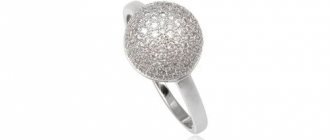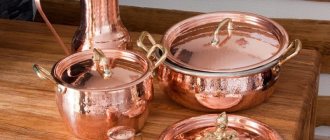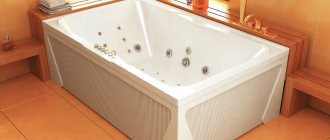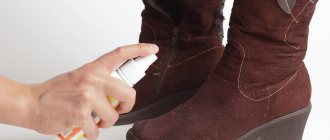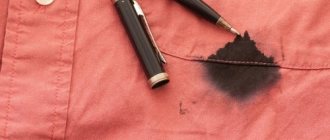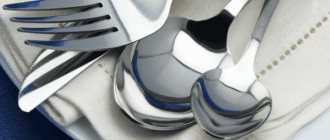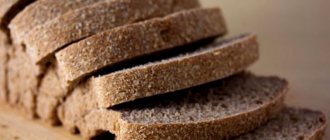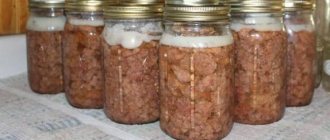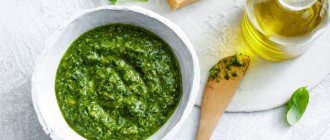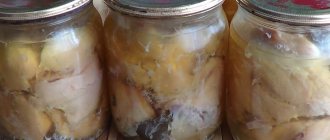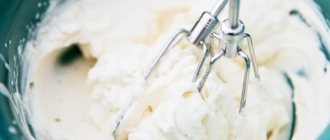What causes blackening
Advice from Chistyuli. Add this article to your bookmarks and useful information will always be at hand!
Silver is a very soft and weak metal.
It is cleaned extremely carefully! A large number of factors cause a change in the color of silver, including both the physiological properties of the body and the characteristics of caring for the products. Metal may turn black if it is affected by the following reasons:
- Low alloy grade (830, 916).
- Store in a plastic or rubber case or out of direct sunlight. And also if the container is new and still releases glue vapors.
- Increased sweating in the owner of jewelry. In such cases, cleaning should be carried out more often; If possible, wear jewelry less often in the summer.
- Stress, hormonal imbalance.
- Exposure to hydrogen sulfide. It is part of the ambient air and exhaust gases. As for cutlery, they are affected by sulfur-containing products (eggs, turkey meat, cottage cheese, beef).
- Increased air humidity.
- Care products (gels, shampoos, hand creams).
- Household chemicals (cleaning products).
It is impossible to get rid of all factors, but everyone can minimize the impact. Attention: the article was written for the website Chistyulya.info. Publishing on other sites is theft of content. Read this and other similarly useful articles in the original source!
Why does silver turn black?
To begin with, it is worth noting that any silver will turn black, but sometimes this does not happen immediately, and sometimes very quickly. What does this factor depend on? There may be several reasons:
- The presence of foreign alloys in the product. Usually good silver is marked 925. This means that the product contains 92.5% of the noble metal, and the remaining percentage is impurities, which are necessary for greater wear resistance and stability, since pure silver is too soft and can easily lose its shape. With a successful and high-quality combination, silver will look good for a long time, but it will still darken. Low quality silver has a higher percentage of impurities, which leads to a faster oxidation process.
- Impact of the environment, in particular the human body. As you know, silver chains and pendants darken faster than rings. This is explained by the fact that sweating occurs more often on the neck and décolleté and its composition differs from other parts of the body. Sweat is an excellent oxidizer for metal alloys in a silver product, so it is in the place of greatest contact that the silver will darken.
- State of human health. Silver darkens even on an absolutely healthy person, but if changes occur quickly, literally in a few days, then it is worth checking with a specialist to see if everything is in order with your health. Usually, rapid darkening of silver jewelry on the human body indicates problems with the liver and kidneys.
- Skin care cosmetics. This is another reason for the rapid loss of the presentable appearance of silver jewelry. If silver darkens after contact with hand cream or body lotion, then most likely these products contain sulfur, upon contact with which silver and other alloys, in particular copper, oxidize and acquire a dark coating. Also, household chemicals – liquids for washing dishes, floors, washing powders, etc. – also affect the change in the color of silver. Therefore, when working with these products, it is better to remove silver jewelry.
How to prepare silver
Before processing, it is necessary to take into account three main criteria for preparing jewelry, including:
- degree of pollution;
- presence of inserts;
- available cleaning assets.
If there are stones, engravings, carvings, it is not recommended to use aggressive methods that can easily damage the structure and coating. The alloy is also important, since cheap jewelry will only deteriorate under the influence of chemistry.
Jewelry that comes into direct contact with the skin and sweat or is contaminated with industrial grease must be washed with Fairy before treatment or you can make a cleaning solution yourself. Additionally, they can be cleaned with a soft brush with natural bristles.
Safety regulations
In order to protect yourself during metal processing, you should approach the process with special attention and caution:
- During preparation, wear high gloves, a mask, and an apron.
- Cover your work area to protect the surface.
- Provide fresh air flow (with open windows, on the balcony).
- Use one chemical, do not mix or change concentrations.
- Dip and remove jewelry with disposable tweezers (can be made of titanium).
Advice from Chistyuli. You cannot use metal containers or tweezers to work with the alloy, since due to the reaction with low-grade metal, additional plaque may form.
All recipes for silver are also suitable for products made from cupronickel
First aid in the kitchen
It's no secret that jewelry can be cleaned with the help of foods or food additives and spices. Such techniques have been used since ancient times, but they are still relevant today.
Soap solution
If the dirt is slightly dirty, you can dissolve soap shavings in water and wipe the product with the resulting solution. This method only deals with minor areas of soot, grease or darkening. It will not clean carvings or small stones.
Cleaning with foil and baking soda
If you have aluminum foil and baking soda on hand, you can easily decide how to quickly clean your silver. Mix soda with water, add a few pieces of foil. Both components clean the metal by boiling: when the water starts to boil, immerse the products for 10-15 seconds. During the reaction, aluminum will remove plaque and clean the jewelry. Then rinse and dry. This method keeps silver shiny for a long time.
Features of cleaning a silver bracelet
To clean a silver bracelet, it is better to use special solutions that are sold in jewelry stores .
They are intended for various products, including jewelry with precious stones. If all the instructions were followed and the solution was selected correctly, the metal will retain its shine for a long time. After all, their advantage is that they form a thin protective film that lasts for several months. But there are also traditional methods. The ingredients for at least one recipe are sure to be found in every kitchen.
Soda
A quick and reliable method for removing blackness from silver. You need to prepare:
- glass bowl;
- baking soda;
- baking foil;
- boiling water.
Procedure:
- Cover the bowl with foil and press it down a little (not to the bottom);
- put a silver bracelet there;
- sprinkle soda on top, about 2-3 tbsp. l. (depending on size);
- pour a small amount of boiling water, the reaction will begin;
- wait 4 minutes;
- remove the bracelet and rinse under running water.
Ammonia
A proven and gentle method, suitable for cleaning a bracelet with precious stones. For this process you will need:
- soapy water;
- glass container;
- ammonia solution.
Process:
- Pour warm soapy water into the container;
- add 5-8 drops of ammonia;
- Dip the chain into this solution and leave for 10-15 minutes;
- then rinse the bracelet under cold running water.
Important! If you add chalk powder to the mixture with ammonia and rub it on the silver, the darkening will go away after 5 minutes.
Tooth powder
This option is suitable for smooth products, since chains and bracelets with intricate patterns have many hard-to-reach places that cannot be cleaned . To do this you will need a piece of soft cloth and tooth powder. Moisten the cloth with warm water, sprinkle with powder and gently wipe on all sides.
Important! Do not press hard when rubbing, soft silver is easy to scratch.
Vinegar
There are two ways to clean a silver bracelet with this product. Pour vinegar into a bowl and place the decoration in there, hold for a while. Then rinse and wipe dry. Or moisten a cloth with vinegar and wipe it on all sides, then rinse and dry.
Citric acid
This option will also help restore the metal’s former shine; for it you need to prepare:
- 100 gr. citric acid;
- 500 ml water;
- a piece of copper wire.
Mix lemon juice with water, put wire in a bowl and place in a water bath. When the solution boils, place silver jewelry in it for 10 minutes. Then rinse under the tap and wipe with a cloth, removing any remaining plaque.
Special cleaning products
How do you clean silver at home to make it shine? Today, many combinations of cleaning agents and home recipes have been compiled. But they also produce finished products for the care of precious metals:
- "Flyurin"
- "Aladdin"
- "Unicum"
- HG
- Talisman
There are also special wipes for wiping silver that effectively clean the coating. However, it is not recommended to treat metal with alcohol wipes, as they give a yellowish tint.
Patina is a black coating on silver. Some products with patina are very valuable
Products from a cosmetic bag
They are convenient because they are always at hand and can be used even while traveling. However, many of them should be used as little as possible. For example, abrasives - toothpaste, powder, soda. The lipstick seems to clean surfaces well, but at the same time it gets forgotten into the small cavities of the product, from where it is difficult to remove. Choose your makeup product wisely.
Using lipstick
Pomade is an excellent ingredient for treating silver jewelry. Due to its fat content, it cleans surface dirt and blackness, provided that there are no traces of oxidation on the metal.
Advice from Chistyuli. It is better to use hygienic lipstick - it is colorless, and if difficult-to-remove elements remain somewhere, at least they will not be visible. You will successfully “be patient” until you arrive home to wash the product in hot water with a brush.
Tooth powder or paste
A classic option that is not recommended for use alone due to the risk of microcracks. Tooth powder is mixed with water until it becomes pasty and applied to the product. Processing time 15 minutes. If we talk about toothpaste, use gel toothpaste, it is not abrasive.
How to get rid of scratches on silver
Pastes
I would call this method the most labor-intensive and time-consuming, but since it still helps get rid of minor scratches and defects, it is worth mentioning. The problem can be solved by vigorous polishing with a soft cloth and a silver cleaner. This can be green GOI paste or regular chalk soaked in water. Through prolonged grinding you will achieve a level surface. But if the damage is severe, this method will not help.
Fine skin
On some products, deep scratches can be removed using the finest sandpaper (“zero”). After this, the surface must be thoroughly polished using GOI paste (for silver, No. 2 is better) and soft cloth or felt. The method, of course, requires increased accuracy and tenderness, since if you overdo it with pressure, the thing can be completely ruined.
Nail files
To eliminate minor defects, nail files with a soft coating are suitable. These are exactly the ones used to polish the nail plate. If the scratch is in an “inconvenient” place, you will have to look for a file with a narrow end to get to the flaw.
Polishing paper
If you can purchase special polishing paper, you can use it to remove scratches from a silver item. Sheets of paper have different degrees of abrasiveness, so moving from rougher to softer, there is a chance to smooth out the damaged area to perfection. The advantage of this paper is that it is convenient to fold and repair even products with small parts in inconvenient places.
Silicone rings
This option also requires the purchase of special things, namely round silicone nozzles. Just like with paper, they come in different forms - from the so-called “sandpaper” to soft polishing ones. The size of silicone circles can be selected according to the product.
To work, you will also need a grinding machine or any of its home equivalents - for example, a bead expander. A silicone ring is placed on the rotating rod of the machine, first for rougher processing and then for more delicate polishing. Such attachments have teeth, so when replacing it is important that they point in the same direction as the teeth of the previous ring.
Sewing needle
If a deep scratch appears on the convex side of a silver object, then you can try the option with a regular sewing needle. The middle part of the needle is moved along the scratch, smoothing its edges. This must be done carefully so that the sharp end of the needle does not touch the silver, otherwise an additional defect will result. After this, the item is polished using any suitable product (GOI paste, toothpaste).
How do jewelers clean silver?
How do jewelers clean silver in their workshops? The secrets of professionals are quite accessible for use at home. Use safe products. Refuse advice with sulfuric acid and other “killer” components. Their use requires serious skills. It's better not to take risks. We provide simple and effective jewelry recipes that are accessible for use by inexperienced users.
Universal bleach
Universal whitening powder is popular. This is an acid-free powder, chemically absolutely harmless to health. It is designed for cleaning precious metals and minerals. The mixture is prepared at the rate of 100 g of chemical per 500 ml of water. Processing time 10-15 minutes.
Sodium sulfate
Rules for cleaning silver at home
Before you start cleaning yourself, you should find out what standard the silver is . The smaller it is, the more gentle the product should be. In order not to spoil your favorite silver bracelet, you need to know a few important rules:
- silver is a soft metal, so cleaning with rough materials such as rough cloth, hard bristle brushes or steel wool is not recommended;
- after cleaning with the solution, the product is rinsed with water and polished with a soft cloth such as fleece, flannel or felt;
- The bracelet is cleaned systematically so that a lot of plaque does not form;
- You should not take on the task of cleaning expensive jewelry; it is better to leave it to specialists;
- When removing plaque at home, you should not use harsh chemicals.
Cleaning blackened silver
Cleaning such products is especially meticulous, because during the processing process the blackening itself can be removed. You can use mild abrasives, pastes or soapy water. But it is important not to overdo it and carry out the processing correctly. The presence of stones cancels cleansing with abrasives: it is better to use soap, lipstick, ashes.
To treat with ash, you can take a cigarette or burn paper; Apply to a napkin or cotton sponge, wipe and dry.
A decoction of potatoes, in which the decoration is placed for 20-30 minutes, has worked well. Afterwards, it must be cleaned with a brush and rinsed well under running water. The broth should not boil. The silver is placed in the container after removal from the heat.
Caring for Silver Rings
A silver ring may lose its attractive appearance, primarily due to household pollution. Particles of dust, hard soap, creams, and food get clogged into the grooves of the relief surface of the ring, which does not look entirely aesthetically pleasing.
To ensure that silver jewelry retains its attractive appearance for a long time, you need to follow simple rules:
- Store in a cool, dry place, preferably in a canvas bag.
- Remove the ring when cleaning, washing and cooking.
- Remove jewelry before washing your hands.
- Rinse the ring with running water every 3-4 weeks and rub with a soft cloth.
- Silver rings do not like high humidity. If the weather outside is like this, it’s better to wear something more practical.
What to do if the ring darkens while doing housework? It is necessary to soak it for 5-10 minutes in a warm soapy solution and carefully brush the surface with a toothbrush.
It is enough to clean silver jewelry 2-3 times a year so as not to spoil the surface of the product.
Gilding processing
The most budget-friendly option would be to immerse the products in wine alcohol or beer for 25 minutes. 5-10 minutes before the end, you can clean the metal with a brush. After removal, rinse well and dry.
Metal with gold is well processed with starch (in the form of gruel), potato broth and whey. If serum is used, it is heated and silver is poured in for 3 hours.
If there is heavy contamination, the metal is first dipped in a soapy solution and cleaned with a brush. Then it is immersed in a solution: 5 drops of ammonia and 1-2 teaspoons of detergent are added to 1 liter of warm water.
Silver is gilded to extend the service life of the product: this way they are less susceptible to corrosion and oxidation. This option is also cheaper than pure gold. Although it looks rich and luxurious.
How to clean silver with hydrogen peroxide
A pure drug without dilution with water or without the addition of some other agents that enhance the effect is not used.
Before cleaning silver with hydrogen peroxide, degrease it by soaking it in a solution of shampoo or dishwashing detergent for 15–20 minutes. Then rinse it with clean water, dry it with a soft cloth and begin the cleaning procedure. Use only soft bristle brushes or cloth napkins.
Peroxide formulations do not burn your hands, but if you have sensitive skin, use rubber gloves.
Hydrogen peroxide solution in water
The method is suitable for silver items with a fairly even surface and a slight degree of contamination:
- Add 50 ml of peroxide to a liter of water.
- After degreasing, place silver items in this solution for 2-3 hours.
- Remove, wash in clean water and dry.
Periodically check the condition of the products in the solution. Light tarnishing will “go away” in less time.
Peroxide with ammonia
An effective and fast method that removes not only tarnish, but also blackness from metal. Procedure:
- In a liter of water, dilute 2 tbsp. spoons of ammonia and hydrogen peroxide.
- Soak silver dishes, jewelry without stones or blackening in this solution.
- Leave the jewelry in it for 15–20 minutes.
- Rinse with water and dry.
If you are confident in the high quality of your silver, for small jewelry you can use a more saturated solution without water: take one part of ammonia to two parts of 3% peroxide. The blackness will go away after just a few minutes of soaking.
Ammonia fumes are unpleasant to the sense of smell, so carry out work in a well-ventilated area, and, if possible, in the fresh air.
Cleaning silver with ammonia
Hydrogen peroxide with soda
The best way to clean products with complex surfaces. You will need a piece of cotton napkin, or better yet, a small brush for cleaning between the teeth or a toothbrush with soft bristles. Working technology:
- Add enough hydrogen peroxide to a tablespoon of food grade to make a mushy mixture.
- Using a soft cloth, carefully apply it to the silver item, gently wiping particularly dirty areas.
- Leave in this state for fifteen minutes.
- Rinse off the dried mass and dry the silver thoroughly.
This cleaning method was tested by our great-grandmothers. Even heavily soiled products sparkle like new after use.
How to properly clean silver with soda
Silver spoons and forks
The main rule for storing silverware is dry, cold and dark. With an increased level of humidity or proximity to the hob, the dishes begin to turn yellow and black.
To eliminate blackening, use ammonia, peroxide, water and toilet soap. It can be done either separately or simultaneously: it all depends on the thickness of the plaque.
You can treat silver with carbonated drinks: Pepsi, Coca-Cola. They should be boiled and, without turning off, add the products for 10 minutes. After this treatment, the dirt was gone!
Ketchup cleans cutlery well, since it contains vinegar (you can also take it in its pure form). Rub the product with ketchup and leave for 10-15 minutes. Afterwards it is cleaned with a brush, rinsed and wiped with a flannel napkin.
How do you clean silver at home if you urgently need to process the metal, but don’t have a soft rag at hand? Will a kitchen scraper work? Cutlery, like jewelry, should never be cleaned with a kitchen metal sponge or scraper. This will significantly damage the coating and create micro-scratches. If there is copper in the alloy, contact with the metal will give the silver a yellowish-greenish tint.
In the photo: silverware before and after treatment in potato broth
Tips for storing cutlery
- Do not wash silver spoons or forks in the dishwasher.
- When processing, use soft agents, excluding abrasives, acids, and alkalis.
- After cleaning, silver must be thoroughly washed and dried.
- Avoid storing in a damp area (near a sink).
- Devices should be located separately from each other, away from high temperatures.
- Do not polish products with a metal scraper (soft rags or napkins are allowed).
- If there is an oxidized coating, have the device professionally cleaned.
Ways to use ammonia
If you are confident in your abilities or are not doing this for the first time, we advise you to learn how to clean silver with ammonia. It is this substance that acts as a potent oxidizing agent. At the same time, ammonia is soluble in air and water. It does not spoil silver and other precious metals. The main thing to remember is that you can only use ammonia for one decoration. If you put gold and silver in a jar of this substance, both metals will change color.
Ammonia is inexpensive, it can be purchased at a pharmacy and subsequently used not only to clean silver, but also to remove stains on clothes, wash glass, and also revive a person who has fainted.
Ammonia
Before cleaning silver with ammonia, wash the item in a soapy solution. This will help wash away dirt and adhering dust particles. After this preparation, the cleaning procedure will be more effective.
Next follow the sequence:
- Prepare a cleaning container and fill it with warm water.
- Add ammonia to the water, also known as ammonia, in a ratio of one to ten to water. At the same time, do not bring the jar of ammonia close to your nose; due to the pungent odor, carry out the procedure with a mask.
- Place silver in the solution. Remember that this method is only suitable for silver in pure form or in an alloy; gold-plated silver cannot be cleaned with this method. It is also undesirable to clean silver inlaid with stones or pearls. If you want to use this method, add half the amount of ammonia to the solution.
- You need to keep the product for about half an hour. Although the amount of time depends on the degree of contamination. You can remove the jewelry from the container and control the cleaning. Once you are sure that the product is clean enough, remove it from the solution.
- After this, be sure to wipe the jewelry with a sponge and then wipe it with a dry cloth.
If your product is not too dirty, you can simply wipe it with a cloth soaked in ammonia and leave for two minutes, and then rinse with running water. Thus, you can clean silver with hydrogen peroxide no more than once a week.
Silver cutlery after cleaning
And for heavily blackened items, you can use a cleaning method that also includes hydrogen peroxide. To do this you need:
- the same amount of liquid soap, 3% peroxide and ammonia;
- mix all this with water in proportions 1:1:1:10;
- dip the decoration in the solution for 10–15 minutes;
- After removing from the solution, wipe and dry the product.
The method is quite aggressive, so it should not be used at home for elaborate products with stones or the addition of other precious metals. The ammonia usually disappears from the jewelry within one day. Therefore, do not be alarmed by the specific smell of the product.
How to clean products with stones
Stones require special processing. Many of them have a porous structure, which prohibits the use of soda, tooth powder, acids, and alkalis. And almost all of them cannot tolerate high temperatures. An acceptable option for all stones is a weak soap solution. If the solution needs to be heated, bring it to a temperature that your hand can tolerate.
How to clean silver and coral at home? Corals are cleaned with a soft brush or cosmetic brush. They should not come into contact with water. In addition, corals quickly fade in light and lose their shine, so even short-term cleaning is recommended to be done in places where there is no direct sunlight.
Precautionary measures
Never use abrasive products to clean silver items. Baking soda or tooth powder can scratch the jewelry, especially if it is made of high-quality metal.
Another danger that can damage the product is the form of silver. Recently, blackened silver has come back into fashion, which is specially coated with a layer of sulfate in order to give the jewelry an aristocratic look. Such products look like real antiques. They do not require cleaning, except to remove dust and dirt. It is important not to mix up and not to dip blackened silver in ammonia.
Do not forget to also monitor the product and the way it is stored. You should not bathe with silver or perform cosmetic procedures. The more carefully you take care of your jewelry, the longer your product will remain intact and clean.
Golden rules for caring for jewelry with stones
- Do not wipe stones after treatment with hard fabrics.
- Store in a dark, closed place in a case.
- For pearls, use a microfiber cloth.
- Do not wear jewelry with a stone if you plan to visit a cosmetologist or play sports.
Stones that are preferable to be taken to a workshop for processing:
- kyanite
- amber
- ocean pearl
- coral
- diamond
There are known cases when the “king of hardness” - a diamond - cracked during boiling. Agree, this is too expensive an experiment to risk a stone at home.
Comments and advice from jewelers
Like any piece of jewelry, silver can be treated to prevent it from tarnishing. But how can you clean silver at home so that it shines for a long time?
Tip #1 : Do not use unfamiliar drugs, especially if there are no instructions or specified concentrations.
Tip #2 : You can use mustard as a substitute for soda. It perfectly removes plaque, has an antibacterial effect, but does not scratch surfaces. To do this, pour 100 g of mustard with 1-1.5 liters of water and put on fire. Then the products are placed in the container and boiled for about 40 minutes. After cooking, rinse under water and wipe with a soft cloth.
Tip No. 3 : In case of old plaque or oxidation, jewelry is subjected to ultrasonic treatment (US) - a new and high-quality method. Attention: the article was written for the website Chistyulya.info. Publishing on other sites is theft of content. Read this and other similarly useful articles in the original source!
How is silver cleaned? The ultrasonic bath is filled with a special washing liquid, and ultrasonic waves penetrate through the walls of the container to the jewelry. This procedure is carried out in a jewelry salon, but you can purchase the device yourself.
Stones are not allowed for ultrasonic processing:
- pearl
- emerald
- coral
- tourmaline
- malachite
Tip #4 : It is better to leave coin cleaning to professionals. During processing there is a risk of erasing the engraving or changing color. If it is not possible to go to a jeweler, then you can use a soap solution or Leuchtturm: it is non-aggressive and can only clean superficial dirt or grime.
Tip #5 : If the jewelry is plated with rhodium, it should be sent to a salon for processing. The coating is very delicate, and homemade recipes can destroy its structure, promote tarnishing, and micro-scratches.
Having collected new recommendations into a treasury of useful tips, there is no point in worrying about how to clean silver at home! If silver products are an indispensable attribute, then everyone should have basic jewelry care products at home.
Share useful information with your friends:
